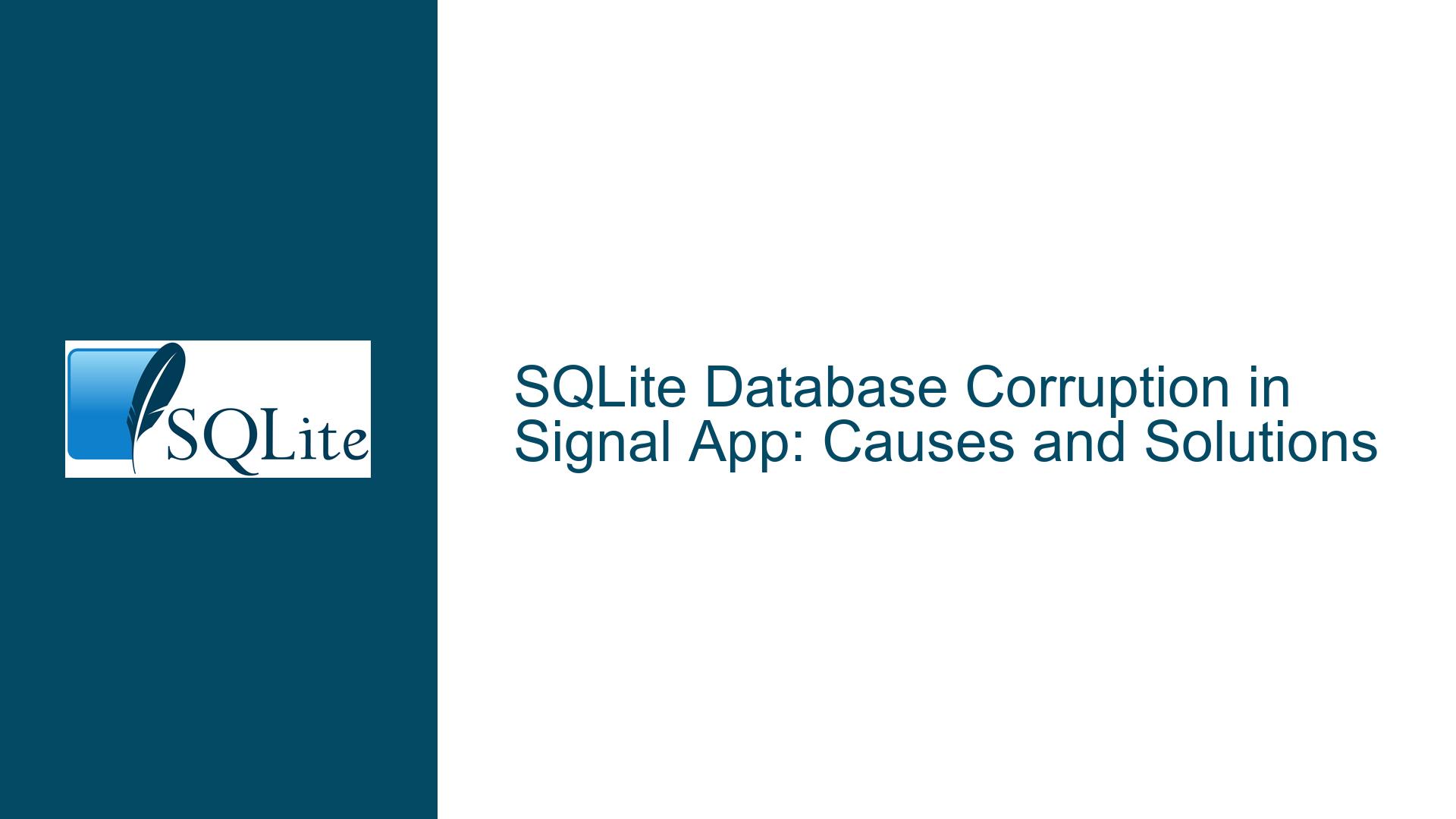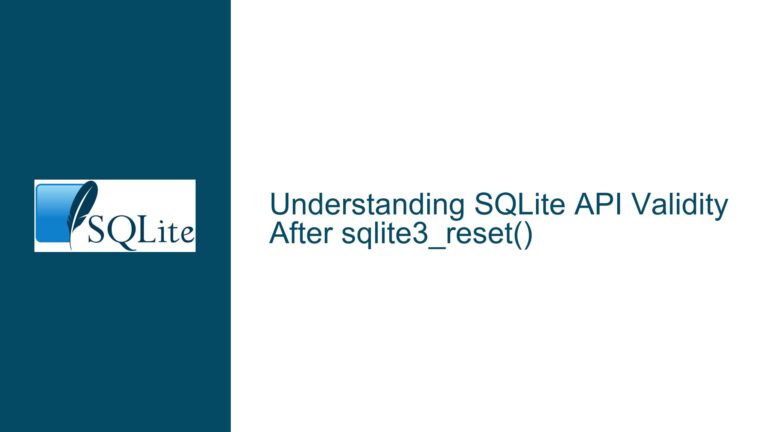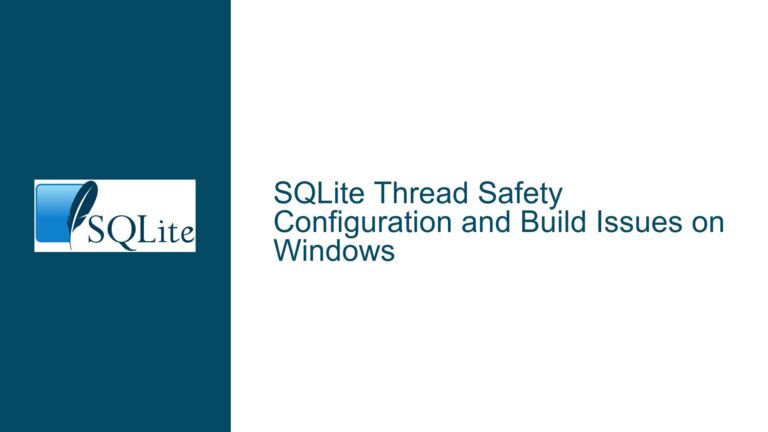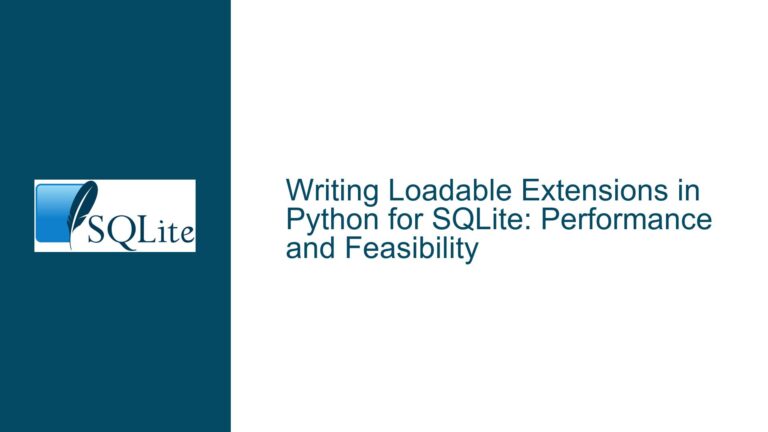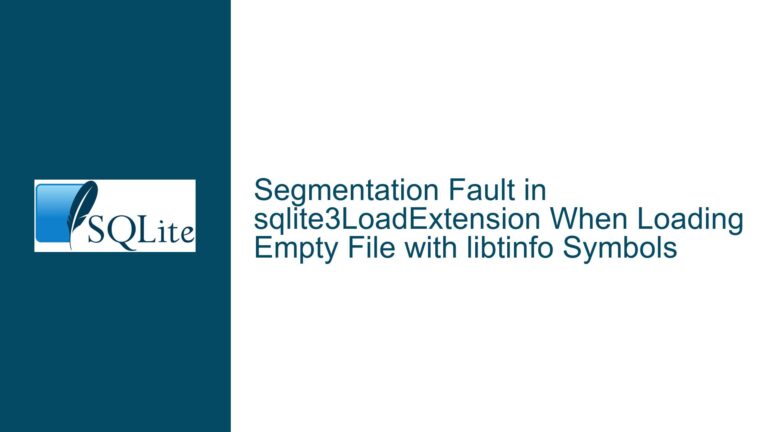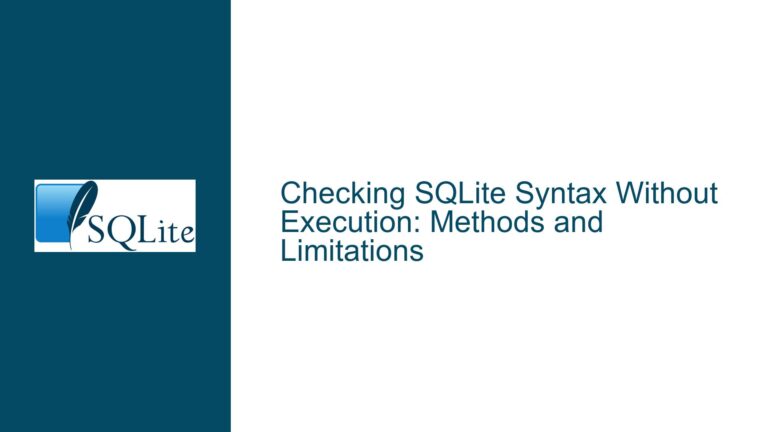SQLite Database Corruption in Signal App: Causes and Solutions
SQLite Database Corruption Due to External File Writes
The core issue revolves around the corruption of SQLite database files used by the Signal messaging app, specifically the desktop version. The corruption manifests in the first part of the database file, including the magic string that identifies the file as a valid SQLite database. When this corruption occurs, SQLite fails to recognize the file as a valid database and returns the SQLITE_NOTADB error. This issue is particularly problematic because it renders the database unusable, leading to potential data loss for users.
The corruption is not due to a flaw in SQLite itself but rather appears to be caused by external processes writing to the database file. This external interference can occur in several ways, but the most likely scenario involves another process or thread within the Signal app or the operating system writing to the file while SQLite is also accessing it. This simultaneous access can lead to inconsistencies in the database file, particularly in the header section, which contains critical metadata such as the magic string, page size, and schema version.
The magic string, "SQLite format 3," is a 16-byte sequence at the beginning of every SQLite database file. If this string is overwritten or corrupted, SQLite will refuse to open the file, as it cannot verify that the file is a valid SQLite database. This is a deliberate design choice in SQLite to prevent accidental or malicious use of non-database files. However, it also means that any corruption in this area, whether due to external writes or other issues, will result in the database being inaccessible.
The problem is exacerbated by the fact that SQLite relies on the underlying file system to manage file access. While SQLite provides mechanisms like write-ahead logging (WAL) and journaling to ensure data integrity, these mechanisms are ineffective if another process directly modifies the database file. In such cases, SQLite has no way of knowing that the file has been altered, leading to potential corruption.
Interrupted Write Operations and File Descriptor Conflicts
The corruption of the SQLite database file in the Signal app can be attributed to two primary causes: interrupted write operations and file descriptor conflicts. Both of these issues stem from the way the operating system and the application manage file access, particularly in a multi-threaded or multi-process environment.
Interrupted write operations occur when a process is writing to a file, and the operation is abruptly terminated, either due to a crash, power failure, or an external interruption. In the context of the Signal app, this could happen if the application or the operating system crashes while writing to the database file. When a write operation is interrupted, the file may be left in an inconsistent state, with only part of the data written. This can lead to corruption, particularly in the header section of the SQLite database, where critical metadata is stored.
File descriptor conflicts, on the other hand, occur when two processes or threads attempt to access the same file simultaneously using the same file descriptor. In the case of the Signal app, this could happen if the application closes a file but continues to write to it using an open file descriptor, while SQLite has already opened the file using the same descriptor. This scenario is particularly problematic because it can lead to data being written to the wrong location in the file, resulting in corruption.
The issue of file descriptor conflicts is not unique to SQLite or the Signal app. It is a common problem in systems where multiple processes or threads share access to the same files. However, it is particularly problematic in the context of SQLite databases because of the way SQLite manages file access. SQLite assumes that it has exclusive access to the database file, and any external modifications can lead to corruption.
In addition to these primary causes, there are several other factors that can contribute to database corruption in the Signal app. These include:
- Improper file locking: SQLite relies on file locking to prevent multiple processes from writing to the database simultaneously. If the file locking mechanism fails or is not properly implemented, it can lead to corruption.
- File system issues: The underlying file system can also contribute to database corruption. For example, if the file system does not properly handle write operations or if there are bugs in the file system implementation, it can lead to data being written incorrectly.
- Hardware failures: Hardware issues, such as a failing disk or memory corruption, can also lead to database corruption. While these issues are less common, they can still occur and should be considered when troubleshooting database corruption.
Implementing PRAGMA journal_mode and Robust File Handling Practices
To address the issue of SQLite database corruption in the Signal app, several steps can be taken to prevent external writes and ensure data integrity. These steps include implementing SQLite’s PRAGMA journal_mode, adopting robust file handling practices, and ensuring proper file locking.
Implementing PRAGMA journal_mode
One of the most effective ways to prevent database corruption in SQLite is to use the PRAGMA journal_mode feature. This feature allows you to configure how SQLite handles journaling, which is a mechanism used to ensure data integrity in the event of a crash or power failure. There are several journaling modes available in SQLite, including:
- DELETE: This is the default journaling mode. In this mode, SQLite creates a separate rollback journal file that contains the original content of the database before any changes are made. If a crash occurs, SQLite can use this journal to restore the database to its previous state. However, this mode does not protect against external writes to the database file.
- TRUNCATE: This mode is similar to DELETE, but instead of deleting the journal file after a transaction is committed, SQLite truncates the file to zero bytes. This can be faster than DELETE on some file systems, but it also does not protect against external writes.
- PERSIST: In this mode, SQLite does not delete or truncate the journal file after a transaction is committed. Instead, it leaves the journal file in place, but marks it as invalid. This can be useful in some scenarios, but it also does not protect against external writes.
- MEMORY: This mode stores the journal in memory rather than on disk. This can be faster than other modes, but it does not provide any protection against crashes or power failures.
- WAL (Write-Ahead Logging): This is the most robust journaling mode. In WAL mode, SQLite writes changes to a separate WAL file instead of directly modifying the database file. This allows multiple processes to read from the database simultaneously while only one process writes to it. WAL mode also provides better protection against crashes and power failures, as the database file is not modified until the changes are committed.
For the Signal app, using WAL mode is highly recommended. WAL mode not only provides better performance in multi-threaded environments but also offers superior protection against database corruption. To enable WAL mode, you can execute the following SQL command:
PRAGMA journal_mode=WAL;
Adopting Robust File Handling Practices
In addition to using WAL mode, it is important to adopt robust file handling practices to prevent external writes to the database file. This includes:
- Exclusive file access: Ensure that the SQLite database file is accessed exclusively by the SQLite library. This means that no other process or thread should open or write to the file while SQLite is using it. This can be achieved by using proper file locking mechanisms and ensuring that all file operations are performed through the SQLite API.
- Proper file closing: Ensure that all file descriptors are properly closed after use. This prevents file descriptor conflicts and ensures that no stale file descriptors are left open, which could lead to external writes.
- Error handling: Implement robust error handling to detect and recover from file access errors. This includes checking for errors after every file operation and taking appropriate action, such as retrying the operation or logging the error for further analysis.
- File system monitoring: Monitor the file system for any unusual activity that could indicate external writes to the database file. This can be done using file system monitoring tools or by implementing custom monitoring logic in the application.
Ensuring Proper File Locking
File locking is a critical aspect of preventing database corruption in SQLite. SQLite uses file locking to ensure that only one process can write to the database at a time, while allowing multiple processes to read from it. However, if the file locking mechanism fails or is not properly implemented, it can lead to corruption.
To ensure proper file locking, you should:
- Use the correct locking mode: SQLite supports several locking modes, including exclusive, shared, and reserved locks. Ensure that the correct locking mode is used for each operation. For example, use an exclusive lock when writing to the database and a shared lock when reading from it.
- Check for lock conflicts: Before performing any file operation, check for any existing locks on the file. If a lock conflict is detected, wait for the lock to be released or take appropriate action, such as retrying the operation or aborting the transaction.
- Handle lock errors: Implement robust error handling to detect and recover from lock errors. This includes checking for errors after every lock operation and taking appropriate action, such as retrying the operation or logging the error for further analysis.
Database Backup and Recovery
In addition to preventing database corruption, it is important to have a robust backup and recovery strategy in place. This ensures that you can recover from any corruption that does occur, minimizing data loss and downtime.
- Regular backups: Perform regular backups of the SQLite database file. This can be done using SQLite’s built-in backup API or by copying the database file to a secure location. Ensure that backups are performed at regular intervals and that they are stored in a secure location.
- Backup verification: Verify the integrity of the backups to ensure that they are not corrupted. This can be done by opening the backup file with SQLite and checking for any errors.
- Recovery plan: Develop a recovery plan that outlines the steps to be taken in the event of database corruption. This includes identifying the cause of the corruption, restoring the database from a backup, and verifying the integrity of the restored database.
Conclusion
The corruption of SQLite database files in the Signal app is a serious issue that can lead to data loss and application downtime. However, by understanding the causes of corruption and implementing robust prevention and recovery strategies, you can minimize the risk of corruption and ensure the integrity of your data. Key steps include using SQLite’s WAL mode, adopting robust file handling practices, ensuring proper file locking, and implementing a robust backup and recovery strategy. By following these best practices, you can protect your SQLite databases from corruption and ensure the reliability of your application.
